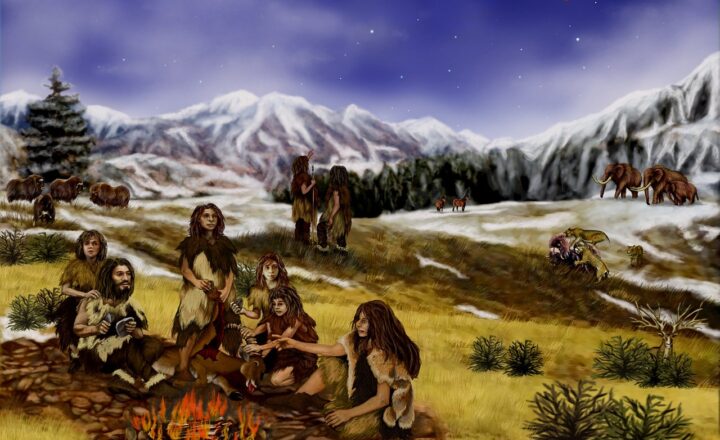The Most Remarkable Fossils Ever Discovered and What They Teach Us
November 17, 2024

Fossils, the remnants of organisms from the past, provide an invaluable window into the history of life on Earth. They contain clues about the evolution, behavior, and environment of ancient creatures, helping scientists piece together the puzzling story of our planet’s biological heritage. In this article, we will delve into some of the most remarkable fossils ever discovered and explore the significant lessons that they teach us about our planet’s history and the evolution of life.
1. What Are Fossils?
Fossils are the preserved remains or traces of ancient organisms, primarily found in sedimentary rocks. They can include bones, shells, footprints, imprints of leaves, and even traces of an organism’s activity, known as ichnofossils. The process of fossilization is lengthy and occurs under specific conditions: the remains must be buried quickly after death and subjected to pressure and chemical processes over time.
Fossils can range from a few thousand to millions of years old, and they are crucial for understanding the history of life, the process of evolution, and the environmental changes that have occurred on Earth.
2. Iconic Fossil Discoveries
Here are some of the most remarkable fossils that have captured the world’s attention and provided valuable insight into ancient life:
2.1. The Burgess Shale
Discovered in Canada, the Burgess Shale is renowned for its remarkable preservation of soft-bodied organisms from the Cambrian period, approximately 508 million years ago. This fossil site has yielded a plethora of diverse life forms, some of which cannot be related to any modern organisms. The Burgess Shale fossils have taught us that the Cambrian explosion, a rapid diversification of life, was far more extensive than previously thought.
Scientists can study these fossils to understand how complex life evolved, the various ecological niches inhabited by these creatures, and the evolutionary innovations that led to modern animal phyla.
2.2. Archaeopteryx
Known as the “first bird,” Archaeopteryx dates back 150 million years to the Late Jurassic period and is a pivotal discovery in understanding the transition from dinosaurs to birds. Fossils of Archaeopteryx exhibit both avian and reptilian features, such as feathers, wings, and a long bony tail. This combination of traits makes it a critical link in the evolutionary chain, helping scientists understand how flight evolved and the relationship between birds and theropod dinosaurs.
2.3. The La Brea Tar Pits
Located in Los Angeles, the La Brea Tar Pits contain exceptionally well-preserved fossils dating back to the Pleistocene epoch, around 10,000 to 40,000 years ago. These tar pits captured and preserved a wide variety of mammalian species, including saber-toothed cats, woolly mammoths, and giant ground sloths. The fossils found here offer insights into the prehistoric ecosystems that existed in North America and the factors that led to the extinction of many large mammals during the late Pleistocene.
2.4. The Rosetta Stone of Pleistocene Paleontology – The Fossils of Ice Age Animals
The discovery of frozen mammoths and other Ice Age animals in Siberian permafrost has provided extraordinary insights into these ancient creatures. Well-preserved specimens, including soft tissues, hair, and even stomach contents, allow scientists to study their biology, diet, and environmental conditions during their time. These discoveries help reveal how these animals adapted to their harsh environments and how climatic changes impacted their survival.
3. What Fossils Teach Us About Evolution
Fossils are essential for understanding the process of evolution. The study of different layers of sedimentary rock, known as the geological timescale, allows scientists to trace the development of various life forms through time.
Fossils demonstrate gradual changes, known as transitional forms, showcasing characteristics of both ancestral and descendant species, which offer clear evidence of evolution. This is particularly evident in the fossil record of organisms like whales, which display a lineage from land-dwelling mammals to modern marine life, revealing the adaptations necessary for aquatic living.
4. Fossils and Past Environments
Fossils also provide insights into ancient climates and ecosystems. By studying the type of organisms that existed at a particular time and their distribution, scientists can infer the environment of that period. For instance, the presence of tropical plant fossils in polar regions suggests that these areas were once much warmer.
Additionally, fossils contribute to our understanding of mass extinction events and climate change, as studying the organisms that thrived before and after these events helps predict how current biodiversity may respond to ongoing changes in climate.
5. The Role of Fossils in Modern Science
Fossils are not only of historical interest, but they also play a crucial role in modern scientific research and technology. For instance, paleontology has inspired advancements in various fields, from biochemistry to genetics. The study of ancient DNA and proteins extracted from fossils has opened new avenues for understanding evolution and extinction.
Furthermore, fossils serve as a platform for paleobiological studies that contribute to our understanding of biodiversity loss and conservation efforts. By examining past extinctions, scientists can devise strategies to prevent future losses in species and ecosystems as the planet faces anthropogenic threats.
Conclusion
The study of fossils provides profound insights not only into the history of life on Earth but also into the evolutionary processes and environmental changes that have shaped our planet. From the awe-inspiring Burgess Shale to the iconic Archaeopteryx, these remarkable fossils teach us invaluable lessons that extend far beyond the classroom. As we continue to unearth the rich tapestry of life through fossils, we also gain the tools to address contemporary challenges faced by our planet’s biodiversity.
It is crucial that we continue to protect and study these remnants of the past to gain a fuller understanding of both our history and our future.








